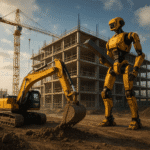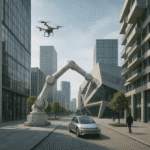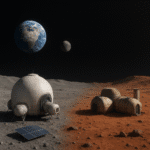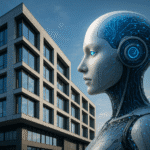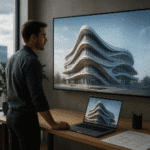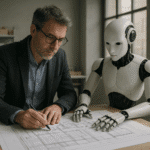Artificial intelligence is rapidly reshaping the field of architecture, pushing the boundaries of what was once considered impossible. As computational tools become more sophisticated, the question arises: can machines truly rival the depth of human creativity in envisioning the cities and structures of tomorrow? This exploration delves into the emergence of AI architects, the evolving synergy between human designers and algorithms, the ethical considerations that accompany this technological shift, and the future landscape awaiting our built environment.
The Rise of AI in Architectural Design
Architectural practice has always been a fusion of art, science, and technology. From da Vinci’s sketches to modern parametric modeling, each leap forward has harnessed new tools to expand creative potential. Now, AI-powered platforms offer a paradigm shift, enabling designers to explore vast design spaces within seconds. Through algorithmic generation and machine learning analysis, these systems can propose myriad configurations for facades, floor plans, and structural frameworks, optimizing for factors like light exposure, energy use, and material efficiency.
Key technological advances fueling this transformation include:
- Computational generative design engines that produce hundreds of iterations based on specified performance criteria.
- Neural networks trained on massive databases of architectural precedents, identifying patterns in style, proportion, and spatial organization.
- Integration of real‐time data sources—climate, traffic flows, and social behavior—to inform adaptive and context-responsive structures.
- Procedural modeling tools that allow parametric adjustments, enabling architects to fine-tune complex geometries with simple sliders.
Human Creativity vs. Machine Logic
While AI systems excel at pattern recognition and optimization, they often lack the intuitive leaps that characterize human imagination. The very nature of creativity involves serendipitous connections and emotional resonance—qualities not easily encoded in lines of code. Yet, machines can augment these human strengths by handling repetitive tasks, crunching vast data sets, and revealing design solutions that might remain hidden under conventional workflows.
Three primary modes of interaction define the AI-augmented design process:
- Collaborative ideation, where architects guide generative algorithms toward desired aesthetic or functional goals.
- Automated performance evaluation, allowing rapid comparison of environmental impact, structural stability, and cost implications.
- Post‐occupancy feedback loops, in which sensor data from built environments informs iterative refinements of design templates.
The Collaborative Future: Human-Machine Synergy
Emerging case studies highlight projects where AI tools have not supplanted architects but empowered them. In a recent urban housing development, an AI-driven platform suggested novel unit layouts that improved daylight distribution by 25%, while the lead architect added handcrafted façade elements to imbue the complex with a distinctive cultural identity. This collaboration illustrates how the interplay of machine efficiency and human sensibility can yield outcomes neither could achieve alone.
Advantages of Collaborative Design
- Accelerated iteration cycles: design options can be generated and assessed in minutes instead of weeks.
- Enhanced sustainability: algorithms prioritize low-energy, low-waste solutions by default.
- Democratized creativity: accessible interfaces allow non-experts to participate in preliminary design phases.
By distributing routine analysis to AI, architects can dedicate more time to conceptual development, narrative crafting, and stakeholder engagement. The result is a richer dialogue between form and function, driven by both human insight and machine precision.
Challenges and Ethical Considerations
As AI assumes a larger role in architectural practice, several ethical and practical questions emerge. Who owns the design outputs generated by a neural network? How do we ensure accountability when AI-driven decisions lead to structural failures or social inequities? Addressing these concerns requires a robust framework of guidelines and regulations that emphasize transparency and responsibility.
Key Concerns
- Autonomy: machines making design choices without meaningful human oversight.
- Data Bias: training sets that reflect narrow aesthetic preferences may perpetuate cultural homogeneity.
- Accountability: assigning liability when AI-generated designs fail to meet safety standards.
- Privacy: sensor-laden buildings collecting occupant data for continuous optimization.
Industry organizations and academic institutions are now collaborating to draft ethical codes that govern AI usage in architecture. These guidelines underscore the importance of maintaining the architect’s role as a steward of both client interests and public welfare.
Futuristic Architecture in the AI Era
The fusion of AI with emerging technologies like 3D printing, robotics, and advanced materials science promises to redefine what structures can look like—and how they’re built. Envision a cityscape where skyscrapers adapt their form throughout the day to modulate solar gain; where residence blocks self-assemble from modular components produced by on-site robotic arms; where airborne drones continuously monitor structural health, triggering real-time repairs through networked nanomaterials.
Key Innovations on the Horizon
- Sustainability through bio-inspired materials that self-heal and sequester carbon.
- Parametric living façades that integrate vegetation and photovoltaic cells for energy-positive buildings.
- Swarm robotics coordinating to assemble large-scale structures at unprecedented speed.
- Virtual reality interfaces enabling clients to inhabit and modify digital twins before construction commences.
These developments are not confined to theoretical research labs. Pilot projects around the globe are already experimenting with AI-driven prototypes, testing how such innovations can be scaled and refined for mass adoption. The resulting landscape is one of continuous evolution, where architecture becomes a living system—responsive, adaptive, and intertwined with the communities it serves.
A New Paradigm of Design
The ongoing transformation challenges the traditional image of the solitary architect drafting blueprints by hand. Instead, the future points toward interdisciplinary teams composed of data scientists, material engineers, urban planners, and AI specialists. In this paradigm, the architect’s role evolves into a conductor of diverse inputs, orchestrating both human sensibility and machine-generated insights to craft environments that are at once functional, beautiful, and resilient.
Ultimately, AI in architecture doesn’t herald the demise of human creativity—it amplifies it. By offloading routine optimization tasks and revealing hidden design possibilities, machines liberate architects to dream bigger. The real question is not whether AI can replace the human spark, but how we can harness computational ingenuity to ignite new forms of expression and forge a sustainable, vibrant built world.
